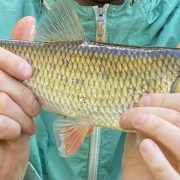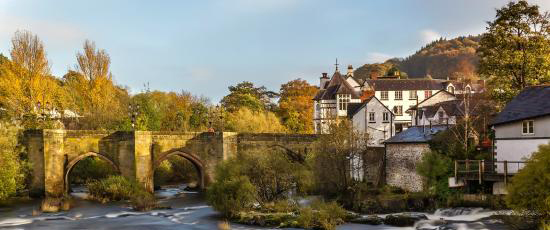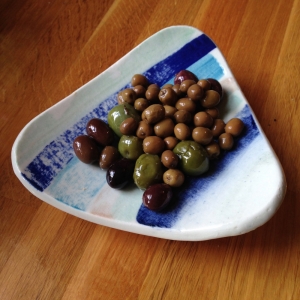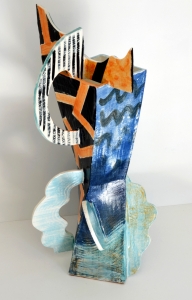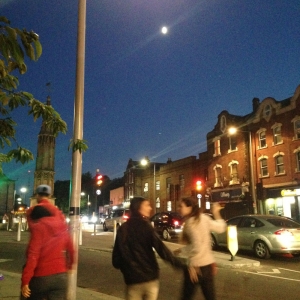Someone to watch over me
Do you ever get that feeling that someone is behind you, staring? A sort of ghostly or alien presence nearby, that you slowly become aware of and makes the hairs on the back of your neck stand up and your spine tingle? This happens at the studio very now and then, and probably as a result of the loneliness of the long-distance potter (see blog May), but more likely the result of having a ceramic custodian placed in the workshop high on a shelf, and then forgetting that it is there.
Our custodian is called Norma. She is imperiously “above it all”, dispassionate and detached, somewhat poker-faced, but commanding and reassuring as she protects the studio from any malevolent spirits. She is not a conversationalist. St Spyridon, or Spiro as we call him, the patron saint of potters, is no good at warding off the malignant because he is too busy with the marketing, and in any case considers such practices as beneath his dignity. However, unlike Norma, he does like to chat.
It’s natural to assume someone behind us is staring, but I think that feeling we get is a self-fulfilling because when we turn around, our action makes the other person look at us, and when they meet our eyes, they give us the impression that they’ve been staring the whole time. Norma – she is inscrutably mute and thus easily forgotten, until, for no particular reason, you become aware of her presence.
In the garden, once Spring arrives and everything starts growing and covering every inch of space with leaves, blossom, buds, stalks, and branches, you forget what was standing visibly throughout the bare Winter months. Indulging in a bit of pruning, you uncover a patch that reveals an old garden sentinel that stares back at you – something familiar that takes you by surprise. In this case Hugo and Frank, who are stylised skulls made as part of a mural commissioned years ago and who were rejected on account of flaws detected – cracks, I think. They still look at one forlornly, even accusingly.
In fact, the garden is full of forsaken ceramics. They peek out at me or make sarcastic comments as I go by: “Call yourself a potter? Didn’t you know that stoneware contains (among other silicates) feldspar, and that this majestic mineral is by far the most abundant in the Earth’s crust, making up about 50% of all rocks? I contain eternity, I’m as old as the planet, and yet…and yet…you cast me out and abandon me in this squalor, surrounded by weeds, mud and (ugh) ants that crawl over me. Have you no respect?”
Tables, on the other hand, being made of wood, suffer from no illusions and stand squarely on the earth’s surface, four-legged and robust, and in the case of these two that are now at the Palais des Vaches, looking quite elegant. Their hand-painted tops are varnished with a heat-resistant resin, so that hot cups of tea or coffee can be placed on them directly without the need for a coaster. Their tapering “sputnik” legs give them a fifties look.
These tables are not for the outdoors, but for the house. And in the house, we have another sentinel that watches over us. He is tucked up in a corner of the kitchen ceiling and has been there uncomplaining for over thirty years, though he has been with the family for forty. Three-fingered and four-toed, he is made of plaster and is named Garrel because the kids could not pronounce the word “gargoyle”, though strictly speaking gargoyles are meant to stand on roofs and act as waterspouts, as well as warding off evil spirits.
Derivation of the word “gargoyle”? From Middle English: from Old French gargouille ‘throat’, also ‘gargoyle’ (because of the water passing through the throat and mouth of the figure); related to Greek gargarizein ‘to gargle’ (imitating the sounds made in the throat).
Spiro says that’s enough wittering on my part and reminds me that this is a ceramics blog, not some etymology lesson, and that I should at least show something recently made. So here it is – above is a large stoneware vase that looks like a jug from a certain angle. And here’s another table…
Do you want to listen to the incomparable Ella Fitzgerald singing Gershwin’s “Someone to watch over me“? Click here.
There’s a somebody I’m longin’ to seeI hope that he turns out to beSomeone who’ll watch over me
Sorry, I couldn’t resist this one:
A man goes into a bar with his small pet newt called Tiny. “A pint for me and a half for Tiny, please,” he says to the landlord.
The landlord asks, “Why do you name him Tiny?”
The man replies, “Because he’s my newt.”




















